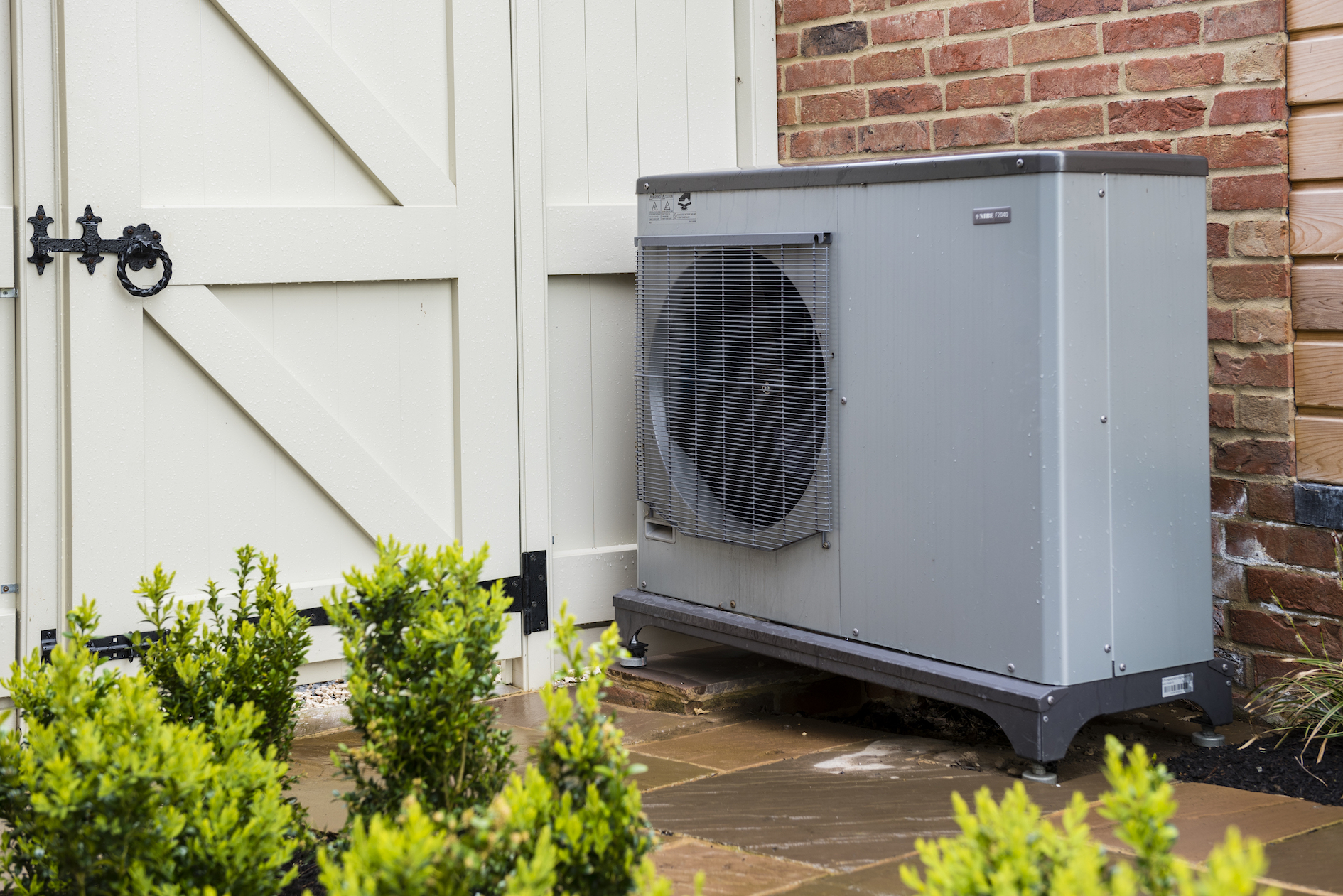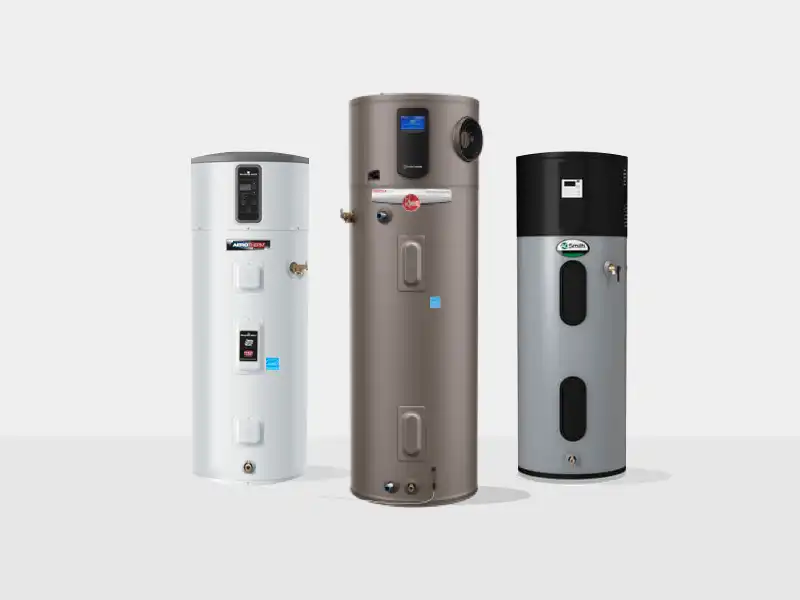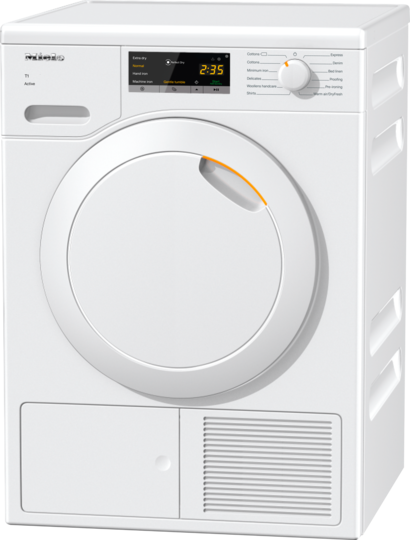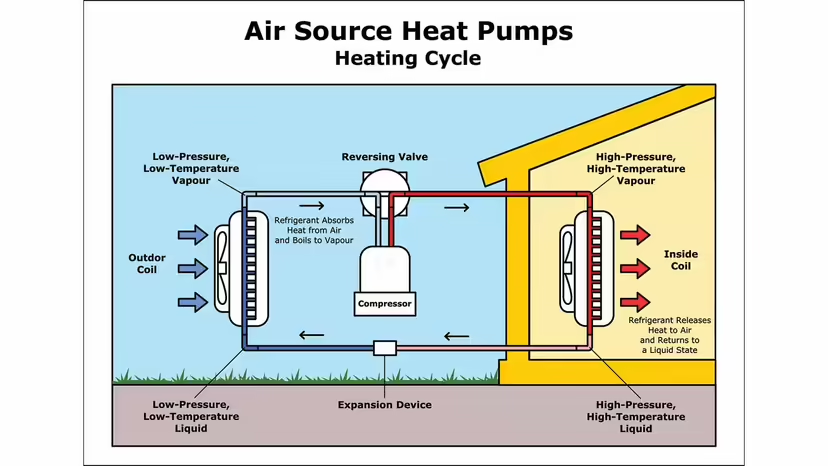Many of us still rely on fossil fuels for heating our homes, either by burning something like natural gas for heat or by using it to produce electricity to power space heaters and air conditioners. Typical resistive electric heat is 100% efficient. For every Watt you put in, you get 1 joule of heat out. However, we have a solution that could move 3-5x more heat than the electricity we put into it. Heat pumps are an amazing piece of counter-intuitive technology that can be 300-500% efficient. In the past they struggled in more extreme conditions, but things have come a long way since then. How well do heat pumps actually work? And should we be using them everywhere? Let’s see if we can come to a decision on this.
I’m in the process of starting to build a new net zero home and have been spending way too much time looking into getting the most efficient setup I can. The rabbit hole I went down sent me on a strange path through the world of heat pumps … where I discovered some things I didn’t know were an option.
Heating and cooling systems are one of the largest sources of energy use in most homes around the globe. In Europe, they represent 50% of the total energy consumption, with approximately 80% still based on fossil fuels. Here in the U.S. heating and cooling electricity use is lower at around 31%, but that’s still substantial, and many homes are still heated directly using natural gas and oil. Just the U.S. alone is producing about 441 million tons of carbon dioxide annually just from our heating and cooling needs. 1 2 3
But what if there was a technology that didn’t require fossil fuels … and seemingly breaks the laws of physics by producing more heating energy than the electricity put into it? Enter the crazy world of heat pumps.
In the world of physics you have something called the conservation of energy. In a nutshell, the energy within a closed system must remain constant … you can’t create or destroy energy. You can only move it. At a surface level, heat pumps seem to defy this rule because you can get 3-5x more heat energy out of a heat pump for every kW of electricity you put into it, but it’s not creating heat energy it’s only moving it. You’re essentially using 1 Watt of electricity to move 3-5 joules of heat. For instance, heat pumps extract heat from the outside air or ground to heat the inside of a home or office building. They can also operate in reverse to chill your house, just like an air conditioner. They move the heat from inside your home back into the ground or outside air.4 5 In essence, a heat pump is simply a series of heat exchangers, moving hot air out of the house during the cooling cycles and hot air into the house during warming cycles.
We’ll start by taking a look at how heat pumps heat and cool our homes, but there are some other interesting ways we can put heat pumps to work in our everyday lives. We’ll go through two of those as well.
1 – Heating and Cooling Your Home
So let’s start with the first area, which I’ve already touched on, heating and cooling your home. The most common type of heat pump used for this purpose is air-to-air heat pumps. These pumps are pretty similar to air conditioning systems, but in order to provide both heating and cooling, a reversing valve is used. 4 6

In heating mode, the outdoor unit blows air over a refrigerant flowing through tubes, which boils at very low temperatures (the common fluid used, R134a, has a boiling point of -26.3ºC or about -15ºF). As the refrigerant heats up it begins to turn into a vapor. A compressor is used to increase the pressure and temperature of the refrigerant and vapor. As the vapor moves into the evaporator, it releases heat into the room, which turns the vapor back into a liquid … and that cycle continues.
In cooling mode, it’s basically reversing the flow of that system. Heat is extracted from the inside of the home, turning the refrigerant into a vapor, which is compressed and sent outside where the fan blows over the coils moving the heat into the outside air.7
Air source heat pumps achieve great efficiency levels, with a coefficient of performance (COP) of 3.0 – 4.0. It means that for every 1 Watt of electricity, 3 to 4 joules of heat is achieved. Comparatively, a high-efficiency boiler powered with oil or gas achieves about 85% … a COP below 1. That’s actually what I have at home today: a natural gas furnace that’s around 85% efficient. I’m going to be changing that soon, but more on that later.
Heat pumps are very flexible and can work with forced air, as well as underfloor or radiator systems, but you may need a larger size radiator to ensure that its surface area is large enough for releasing enough heat into the room. And unlike natural gas and oil furnaces, heat pumps are environmentally friendly since they don’t release any harmful gasses.
However, the major challenges for making heat pumps the mainstream choice are the upfront cost, reduced efficiency in very cold climates (depending on the technology), and also lack of regulations in some parts of the globe. According to Energy Saving Trust, an air source heat pump for a four-bedroom detached home located in Northern Ireland could annually provide £4,300 (about $5,600) in savings and avoid 6.5 tons of CO2 emissions when compared to an old (G rated) LPG boiler. Comparatively, in the US, an average homeowner can save between $815 – $929 per year by replacing an electric furnace and oil boiler with a heat pump. However, if you consider a natural gas boiler, the savings are lower since gas is so cheap, which means a savings of about $200 per year.
Although heat pumps are usually a more efficient alternative to traditional heating systems, they won’t be able to accomplish those high COPs everywhere. When the ambient temperature drops to -10ºC (about 14ºF) or lower, the heat pump’s electric power consumption rate increases to ensure the heat pump’s optimal operation. On top of that, at very low temperatures, frost can accumulate over the outdoor coil, which can reduce efficiency. HVAC installers suggest installing a small resistant electric heater to the system in order to complement the operation of heat pumps in some locations for the coldest days of the year. In those cases, heat pump systems still come out ahead for efficiency over the course of a year.8 9 10 11 12 The end result is that the savings depend on the location and climate of the installation. Some states, particularly in the southeastern part of the country benefit more than states like Wisconsin.
Another type of heat pump is the ground-to-air heat pump, which I’ve explored in my Geothermal Heating and Cooling video. I’m actually looking into installing one of these in my new home, by the way. I’m building a net-zero, super efficient house this year, so be sure to subscribe if you want to see videos on that. One of the assessments performed while planning our HVAC system, estimated that our yearly operating costs for heat, air conditioning, and hot water would be about $2,121/year for an air-to-air heat pump system. A geothermal system by comparison would cost us about $1,175 a year to operate.
In basic principle, geothermal systems work the same way as air-to-air, but a liquid is circulated through tubes deep into the ground. They’re also highly efficient, with a COP from 3 to 5, but their problem is the high upfront cost, which ranges from $10,000 to $30,000, according to EnergySage, but it can go even higher. It’s mainly due to the cost of digging or drilling to install the ground loops. These costs increase with deeper holes, tighter spaces and other such considerations.
Although they are costly when compared to traditional fossil fuel systems, they can save between 25% and 50% on heating and cooling costs. According to the Department of Energy, they have a payback period of 5-10 years and can work efficiently basically everywhere since the ground has lower temperature variations compared to air.13 14
2 – Hot Water
Heat pumps aren’t just about space heating and cooling your home. They can also be used to generate hot water, especially if you combine it with your heating and cooling system. They can be integrated into hot water heaters, immersion heaters, and circulation pumps.
Standalone heat pump water heaters are an efficient alternative that can provide considerable electricity savings. While tankless water heaters are popular, they have a long return on investment of 15 to 18 years, whereas hybrid water heaters have a return on investment of 4 to 7 years with a life span of about 15 years. In addition, they include a backup electric resistance heater in case the ambient air isn’t warm enough to heat the water to the desired temperature.
However, you have to take into consideration where they’re installed. They have to be installed in an area of your property where the temperature ranges from 40ºF – 90ºF (4.4ºC – 32.2ºC), and they require at least 1,000 cubic feet (28.3 cubic meters) of air space around the water heater to operate to spec. This works out great for a garage installation, but not for installation in a small utility closet. Another potential problem, or benefit depending on where they’re installed, is that these hybrid heaters extract heat from the ambient air where they’re installed, which makes the room colder.15 That might be something you actually want.

They can provide energy savings from $200 to $600 per year for homeowners. The cost of a 50-gallon tank is about $1,200 and $2,500 for an 80-gallon tank, but the prices vary with the size and product quality. In addition, you can expect to spend about $600 to $800 with labor costs to install a standalone water heater. However, there may be incentives and rebates where you live, like the federal government’s $300 tax credit.
According to the Department of Energy, the average heat pump style hot water heater costs roughly $225 per year to operate, compared to $400-800 for many traditional tank hot water heaters. According to Energy Star, the average cost of running a hybrid electric heat pump water heater for a household of four is $300 per year, compared to $600 for standard electric water heaters. 16
The US-based company Rheem produces several models of standalone water heaters which can provide $491 per year in energy savings, qualify for local utility rebates, and are 4x more efficient than conventional electric water heaters. Some even come with built-in Wi-Fi to connect to a smartphone app for more control and tracking use. 17 18
One of my Patrons, Paul, who runs the website TinkerTry has documented his experience living with one of these water heaters.
“Three years ago, my natural gas water heater failed. Gladly, I was able to find a Rheem hybrid electric water heater installer who got the replacement price down to about the same cost as a new gas heater, using my state’s $750 incentive coupon. We were able to ditch our basement’s dehumidifier, re-using that same drain line. The occasional fridge-like noise wasn’t a problem as it’s in our unfinished back-area. Using Rheem’s Econet app, I was able to figure we’ve been running at about 195 dollars a year, taking care of our 2.5 adult household’s hot water needs which includes daily showers. We had been spending about $100 per year for decades just to run our dehumidifier!”
If you’d like to see more details about his experience, I’ll include a link in the description to his website.
3 – Clothes Dryers
And finally, the third area where heat pumps are gaining some traction, and one that I wasn’t aware of until recently is in laundry. Heat pump style clothes dryers, or ventless dryers if we want to be more specific, are becoming more popular. Instead of venting warm, humid air to the outside of the house, which is a huge efficiency hit to your entire home, a heat pump dryer runs it through an evaporator to remove the moisture without losing too much heat.
There are some great pros to changing to a ventless dryer, like nearly silent operation, no need for exterior venting, and much higher efficiency. These heat pump dryers use refrigerant in condenser coils, making them 28%-50% more energy-efficient than standard dryers, and they can be installed in a closet, placed under a counter, or stacked in a corner since they don’t need venting.
Obviously, there are cons. The big one is that these heat pump dryers cost twice as much as traditional dryers. Another is that since they don’t get as hot as a traditional dryer, it can take a little longer to fully dry your clothes, but even with the added drying time the overall energy use is still lower. That con kind of comes down to your patience level.19
Companies like GE and Miele have already started to sell ventless dryers here in the US. They’re far more common in Europe. Miele, for example, manufactures several models of heat pump dryers that range in price from £899 to £2,799. GE offers four models with interesting features, like sensor dry technology that monitors moisture and temperature continuously to avoid wear and tear on your clothes caused by over-drying and inconsistent heat. The prices of GE ventless dryers range from $999 to $1419. 20 21 22 23
At the end of the day, the cost per load of laundry for a traditional electric dryer can be between $0.53 – $0.55. A gas dryer comes in around $0.38 – $0.39. And a heat pump dryer spins in around $0.17 – $0.33.24 While heat pump dryers may cost more upfront, they’ll definitely save you money over time … and on that note, they last a much longer time. In some cases the lifespan is almost double that of a traditional electric or gas dryer. Something to factor into your decision making.

So with these three key areas for homeowners to adopt heat pumps, how does future adoption look? The global heat pump market is predicted to grow at a CAGR of 8.1% from 2022 to 2030, with a market value of $67.7 billion in 2021. But with new government incentives like tax credits and rebates, this market may grow even faster. 25 Washington, for example, has updated its energy code and became the first state in the U.S. to require energy-efficient electric heat pumps over traditional furnaces and water heaters. The rules apply to new four-story commercial and multifamily residential buildings and starts in July 2022. In most cases, the new rules effectively ban some standard HVAC systems, like natural gas, as well as less efficient heating systems that use electric resistance. According to a Rocky Mountain Institute analysis, the new required shift toward electric heat pumps could save an estimated 8.1 million tons of carbon emissions by 2050 (the equivalent of taking nearly 1.6 million cars off the road for a year). 26
As I mentioned, I’m building a new net-zero home and am definitely getting a heat pump installed for heating and cooling (most likely a ground source system), as well as for hot water and our dryer. If powered with renewable energy, which they will be, those heat pumps will be carbon-free … and saving me money. Heat pumps have an important role to play in our net zero future. I guess you could say that I’m all in on heat pumps and think we should heat pump all the things. So stay tuned if you want to see how that goes later in the year.
- Cooling as a facilitator for carbon neutrality ↩
- How is electricity used in U.S. homes? ↩
- Home Energy Use ↩
- Heating and Cooling With a Heat Pump ↩ ↩
- How Heat Pumps Work ↩
- How Does a Heat Pump Work? ↩
- Heat Pumps Explained – How Heat Pumps Work HVAC ↩
- The Pros and Cons of Air to Air Heat Pumps ↩
- How efficient are heat pumps? ↩
- Air source heat pumps ↩
- Do radiators work with heat pumps? ↩
- Heat Pump Costs and Savings in 2022 ↩
- How much does a geothermal heat pump cost? ↩
- How much does a geothermal heat pump cost? ↩
- Replaced my failed gas water heater with a much more efficient Rheem hybrid electric with WiFi, its quiet heat pump is also dehumidifying and cooling my basement ↩
- Heat Pump Water Heater Buyer’s Guide ↩
- Rheem® ProTerra™ Hybrid Electric Water Heater ↩
- Heat Pump Water Heater Reviews ↩
- Will a ventless heat pump dryer work for you? ↩
- Are you ready for a heat-pump dryer? ↩
- Miele tumble dryers ↩
- GE® 4.0 Cu.Ft. Stainless Steel Capacity 24″ Ventless Condenser Frontload Electric Dryer ↩
- GE® 4.0 cu.ft. Capacity 24″ Ventless Condenser Frontload Electric Dryer with Stainless Steel Basket ↩
- What Are Heat Pump Dryers (Are They Worth It?)
↩ - Heat Pump Market Size, Share & Trends Analysis Report ↩
- Heat Pump Heads Rejoice: Washington State Now Requires the More Efficient Systems ↩
















Comments